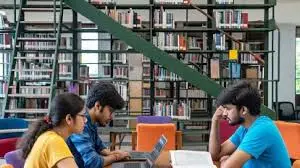Centre, NIOS, NCERT sign agreement to boost inclusive education for children with disabilities

A Progressive Step for Inclusive India
The agreement is part of the Centre’s larger vision under the National Education Policy (NEP) 2020, which places strong emphasis on inclusive and equitable quality education for all. By focusing on children with disabilities—a group often neglected in mainstream educational reforms—this pact reflects the government’s commitment to fostering a barrier-free learning ecosystem.
Union Education Minister Dharmendra Pradhan called the initiative “a transformative leap in making our education system more empathetic, accessible, and inclusive.” He stressed that the collaboration would ensure that no child, regardless of physical or intellectual challenges, is left behind in the journey of learning.
What the Agreement Entails
The three-way Memorandum of Understanding (MoU) outlines a shared responsibility among the signatories to achieve the following:
- Development of Inclusive Content: NCERT will design and revise textbooks and learning materials to include accessible formats such as Braille, large print, and audio versions. These materials will align with the curriculum for both regular and open schooling systems.
- Capacity Building and Training: NIOS will work with NCERT to train teachers, content creators, and special educators in inclusive teaching methodologies, Universal Design for Learning (UDL), and assistive technologies.
- Customized Courses for CwDs: NIOS will offer flexible, learner-centric academic pathways for students with diverse needs. This includes exam accommodations, personalized learning modules, and vocational training.
- Monitoring and Evaluation: The Ministry will oversee the implementation and will establish regular audits to ensure timely progress and quality assurance.
Tackling Barriers Beyond Infrastructure
While accessible ramps, inclusive classrooms, and assistive devices are important, the agreement emphasizes that true inclusivity goes beyond infrastructure. It demands changes in mindset, curriculum design, teacher attitudes, and assessment methods.
The Centre has clarified that this collaboration is not merely a symbolic gesture but a functional model that will be rolled out in a phased manner across states. Pilot projects will begin in select districts, followed by a nationwide scale-up.
Why It Matters: The Numbers Speak
According to Census 2011, over 2.2 million children in India live with some form of disability. Many of them either drop out of school early or are never enrolled due to lack of access, awareness, and adaptability in teaching methods. The new agreement aims to address this educational gap with systemic and scalable solutions.
Education experts and disability rights activists have hailed the move as “long overdue.” Inclusive education advocate Dr. Shalini Verma noted, “For too long, education for children with disabilities was treated as an afterthought. This MoU recognizes them as integral stakeholders in the future of our country.”
Aligning with Global Goals
The agreement also aligns with international frameworks such as the UN Convention on the Rights of Persons with Disabilities (UNCRPD) and Sustainable Development Goal 4, which calls for inclusive and equitable quality education for all by 2030.
India’s National Education Policy also calls for a shift toward inclusive classrooms, teacher sensitivity training, and enhanced use of digital tools to make education more accessible. This MoU directly supports these ambitions.
Technology as a Catalyst
One of the key aspects of the collaboration is leveraging technology for inclusivity. NIOS has already started working on digital learning platforms equipped with sign language, closed captions, and screen reader-compatible interfaces. NCERT is also digitizing textbooks into interactive eBooks with adaptive features for CwDs.
By promoting the use of Artificial Intelligence and assistive tech tools like text-to-speech, speech-to-text, and augmented reality, the institutions aim to bridge the accessibility divide.
Looking Ahead
The Centre has indicated that this initiative is just the beginning. Future plans include:
- Establishing a national repository of inclusive teaching resources
- Creating peer networks of educators trained in special education
- Rolling out scholarships and financial aid for students with disabilities
- Collaborating with NGOs and civil society for implementation support
This MoU lays the foundation for an education system that values diversity, dignity, and equal opportunity. If implemented with sincerity and scale, it can become a blueprint for inclusive education—not just in India, but globally.






